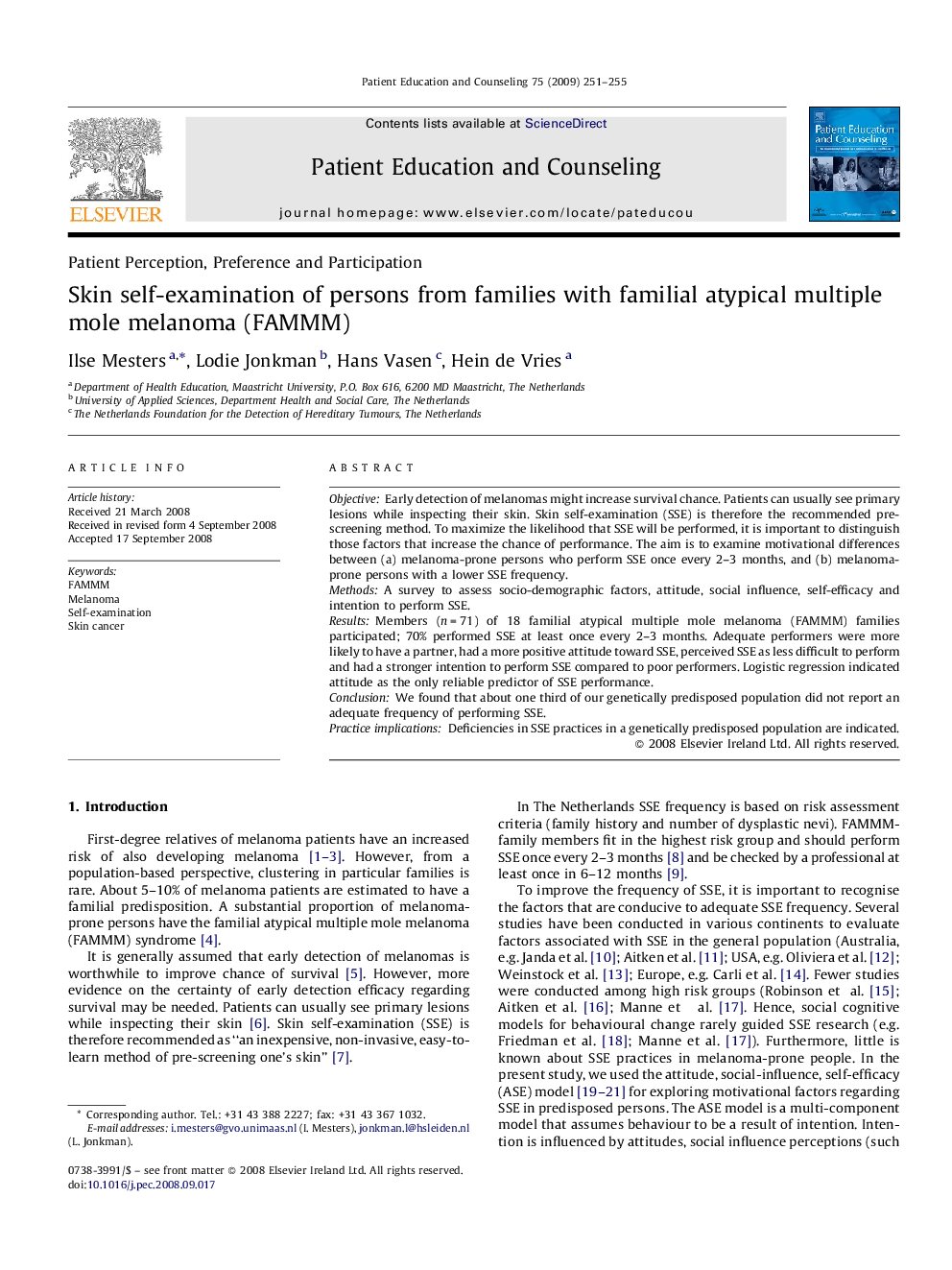| Article ID | Journal | Published Year | Pages | File Type |
|---|---|---|---|---|
| 3816374 | Patient Education and Counseling | 2009 | 5 Pages |
ObjectiveEarly detection of melanomas might increase survival chance. Patients can usually see primary lesions while inspecting their skin. Skin self-examination (SSE) is therefore the recommended pre-screening method. To maximize the likelihood that SSE will be performed, it is important to distinguish those factors that increase the chance of performance. The aim is to examine motivational differences between (a) melanoma-prone persons who perform SSE once every 2–3 months, and (b) melanoma-prone persons with a lower SSE frequency.MethodsA survey to assess socio-demographic factors, attitude, social influence, self-efficacy and intention to perform SSE.ResultsMembers (n = 71) of 18 familial atypical multiple mole melanoma (FAMMM) families participated; 70% performed SSE at least once every 2–3 months. Adequate performers were more likely to have a partner, had a more positive attitude toward SSE, perceived SSE as less difficult to perform and had a stronger intention to perform SSE compared to poor performers. Logistic regression indicated attitude as the only reliable predictor of SSE performance.ConclusionWe found that about one third of our genetically predisposed population did not report an adequate frequency of performing SSE.Practice implicationsDeficiencies in SSE practices in a genetically predisposed population are indicated.
